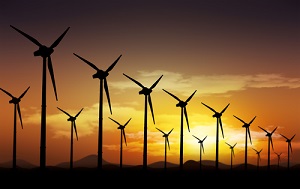

M a r k e t N e w s
Energy Infrastructure Development in East Africa
Posted on : Wednesday, 6th August 2014

Power infrastructure in the East African countries of Uganda, Kenya, Tanzania and Rwanda is inherently connected to their economic growth. As urbanisation and industrialisation fuel the need for electricity in cities, the demand for electricity in East Africa is expected to grow at approximately 5.3 percent per year until 2020. To meet these requirements, generation capacity would have to increase by 37.7 percent in Uganda, 96.4 percent in Kenya, 75.3 percent in Tanzania and 115 percent in Rwanda. The government, in conjunction with development partners, must build a more favourable business environment to facilitate growth.
It is crucial for global investors to understand the unique opportunities and challenges of the individual countries within the region; East Africa has the lowest access to electrical power and smallest per capita generation compared to all other sub-regions on the continent. Government focus on energy development will provide a platform for both private and public sector participants to contribute. However, two of the restraints in development include the lack of investment and finance as well as limited private-sector participation. The private sector is definitely interested in investing, however, governments need to make firm commitments to deregulating markets in order to decrease the risk.
One of the major opportunities in this region is the potential for intraregional energy and trade integrations. This opens up possibilities to reduce costs and ensure greater reliability and sustainability of power supply throughout the region. However, all East African countries would need to invest significantly into cross-border interconnections in order to expand the electricity trade.
If cross-border interconnectors develop and ensure more power flows more readily across the region, then Rwanda, Sudan, Uganda and Tanzania could be positioned as net exporters of electricity, while Kenya and Burundi could operate as net importers. The ability of these East African countries to deliver the necessary investments into hydro power is crucial to positioning them as suppliers to export markets and fast-tracking regional power trade.
The government of Tanzania and TANESCO, the state-owned power utility, are driving the installation and procurement of new power plants.
Tanzania has the potential for a diverse range of energy sources. Most of these sources are untapped, including natural gas, coal, geothermal, biomass, solar power and wind. The high reliance on hydropower leaves the country vulnerable, due to Tanzania’s climate variability. In times of drought, energy cannot be accessed. For example, the droughts in the mid-2000s led to an economic loss of as high as 4 percent of the country’s GDP.
Currently, almost half of all power generated in Kenya is from hydro. The government of Kenya (GoK) plans to focus on coal, oil and wind-powered plants to counter the hydro-generation dependence. Furthermore, the GoK continues to emphasise the development of geothermal resources. It is estimated that Kenya has only exploited 200 MW of the geothermal power potential available, which is approximately 3 percent of the total potential availability. The GoK also plans to develop 5,000 MW of geothermal power by 2030. This will translate into a minimum investment of approximately $18 billion.
The GoK has also created four coal blocks within Mui Basin, Kitui, to lease to prospective investors for exploration and development. According to the National Energy Policy, wind generation capacity will comprise 11 percent of the total energy mix in 2020 from its current (2012) low base of 0.36 percent.
The 250-MW Bujagali hydropower plant in Uganda demonstrates that large-scale private power infrastructure projects can be built successfully in Africa. This is the first power project built in Uganda to secure private financing. The project represents the largest foreign private power sector investment ever made in Sub-Saharan Africa. The project provides 49 percent of Uganda’s electricity-generating capacity. It also positions the government to sell power to neighbouring countries through an interconnection with Kenya. The project is a public-private partnership supplied by Alstom and sponsored by BEL, a company owned by Industrial Promotion Services (Kenya) and SG Bujagali Holdings Ltd. (which is an affiliate of a US company). Blackstone Capital Partners IV, L.P. is a fund that owns the majority of the project. BEL signed a PPA with the Ugandan government. BEL will operate the plant and the government will also lease the land to BEL. Grid connection was secured with a separate interconnection project sponsored and developed by the UETCL. The development and construction of the project faced many challenges, but the project was still completed on time.
Traditionally, power infrastructure projects in East Africa are developed with financing support from government and multi-lateral organisations, such as the World Bank. Increasing investment for power infrastructure development will have to come from private companies in the future. It is clear that energy and electricity has become a real business issue and not just a development agency issue. Public-private partnerships are going forward to ensure the development of power infrastructure in East Africa.
Based on the increasing demand for electricity, energy diversification plans and large gas finds, it is clear that significant power infrastructure development is needed for East Africa.
Source : www.renewableenergyworld.com





























































